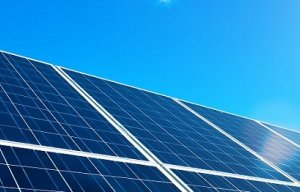
Armageddon Energy, EconCore and DuPont develop ultra-light photovoltaic panel
Empa researchers in Switzerland have developed a material that can be applied to textile fibres, opening up the possibility of clothing providing mobile energy supplies.
22nd October 2020
Innovation in Textiles
|
St Gallen, Switzerland
Empa researchers in Switzerland have developed a material that works like a luminescent solar concentrator (LMC) and can be applied to textile fibres, opening up the possibility of clothing providing mobile energy supplies.
LMCs are already being used in the solar industry. The luminescent materials in an LSC capture diffuse ambient light and transmit its energy to an actual solar cell, which then converts light into electrical energy. However, LSCs are currently only available as rigid components and are unsuitable for use in textiles because they are neither flexible nor permeable to air and water vapor.
An interdisciplinary research team led by Luciano Boesel from the Laboratory for Biomimetic Membranes and Textiles at Empa has now succeeded in incorporating several of these luminescent materials into a polymer that provides precisely this flexibility and air permeability.
This new material is based on amphiphilic polymer co-networks, (APCNs) polymers that have long been known in research and are already available on the market in the form of silicone-hydrogel contact lenses. The special properties of the APCN polymer – permeability to air and water vapor as well as flexibility and stability – are also beneficial to the human eye and are based on special chemical properties.

“The reason we chose this polymer is the fact that we can incorporate two immiscible luminescent materials at the nano scale and let them interact with each other,” said Boesel. “There are, of course, other polymers, in which these materials could be integrated but this would lead to aggregation, and the production of energy would not be possible.”
In collaboration with colleagues from two other Empa labs, Thin Films and Photovoltaics and Advanced Fibers, Boesel’s team added two different luminescent materials to the gel tissue, turning it into a flexible solar concentrator. Just as on large-scale (rigid) collectors, the luminescent materials capture a much wider spectrum of light than is possible with conventional photovoltaics. The novel solar concentrators can be applied to textile fibres without the textile becoming brittle and susceptible to cracking or accumulating water vapour in the form of sweat. Solar concentrators worn on the body offer an immense benefit for the ever-increasing demand for energy, especially for portable devices.

Business intelligence for the fibre, textiles and apparel industries: technologies, innovations, markets, investments, trade policy, sourcing, strategy...
Find out more